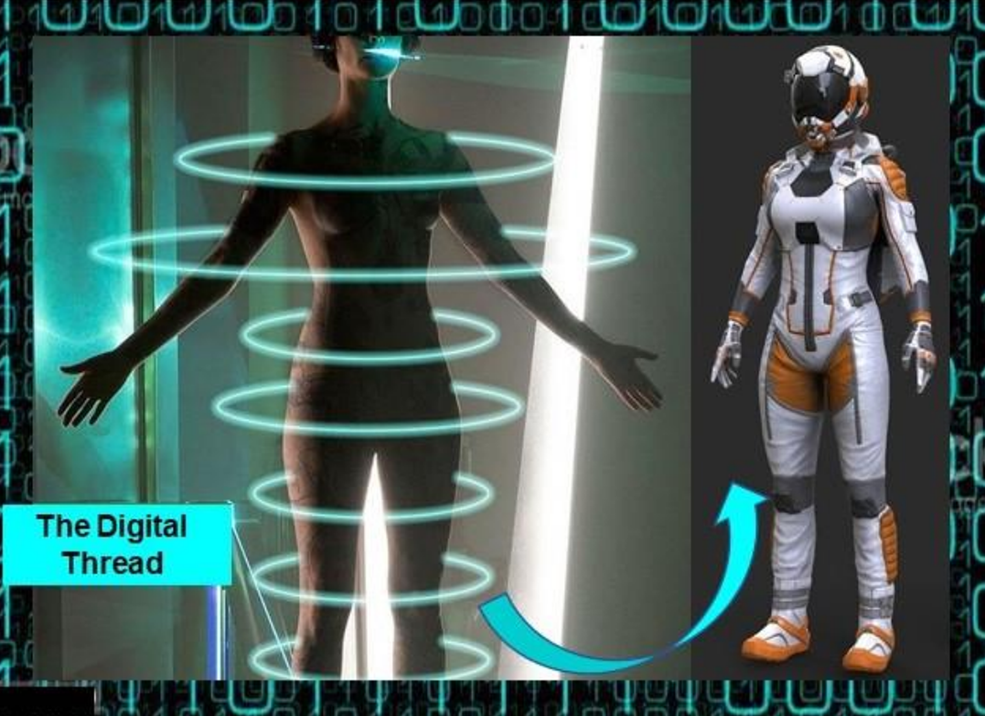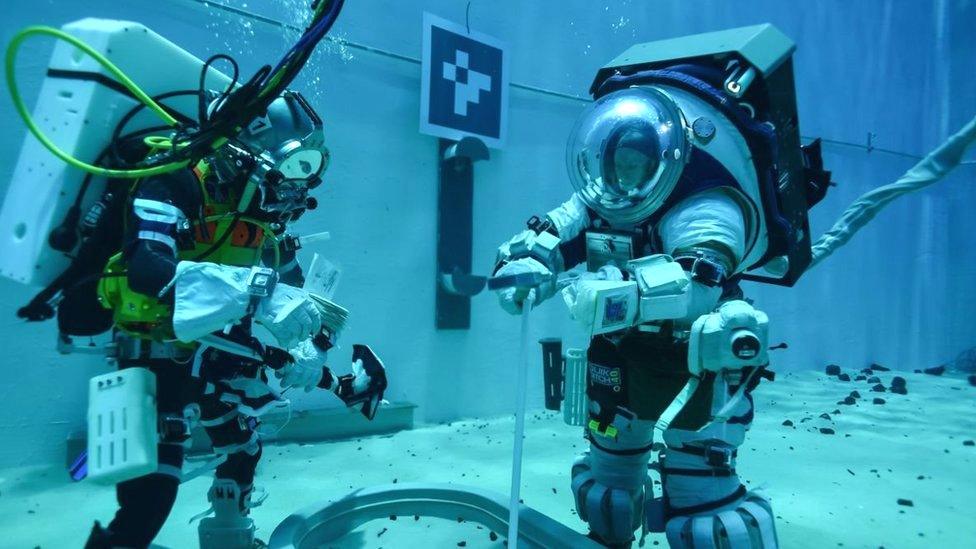Venus birds and robot fish: Nasa's mind-blowing future tech
- Published
- comments

Imagine the scene, an astronaut gets a full body scan and hours later walks on Mars in a space suit built exactly to their body!
On Venus, a drone studies the planet by swooping through the sky like an inflatable bird.
Meanwhile robot micro-swimmers do the same on ocean worlds like the moons of Jupiter and Saturn.
It sounds like science fiction - but these could one day be reality and are part of a huge future tech project that Nasa is investing in right now!
These are all early-stage projects selected by Nasa's Innovative Advanced Concepts (NIAC) program to get extra funding for the next stage of their experimentation.
Have a read and then let us know in the comments below if you have any brain busting ideas to help Nasa explore space - no idea is too wild - so use your imaginations!
What is NIAC?

NIAC focuses on big and bold ideas that could lead to breakthroughs in space science.
Not all of them will come to anything that will actually be used, but Nasa believes that if you don't experiment then you won't get to breakthroughs like the Mars-copter or the new James Webb telescope.
The projects it funds have to compete for cash and need to show that they are well-founded in scientific research but also must be pretty out-there and show new ways of thinking about the problems faced by tomorrow's space explorers.
"Nasa's mission to explore the universe requires new technologies and new ways of doing things," said Jim Reuter from Nasa's Space Technology Mission Directorate.
Studying these creative ideas is the first step to turn science fiction into science fact.
In total 5.1 million dollars in grants will be shared by 17 researchers from nine different US states.
"As we set our sights on ever more challenging destinations for exploration with humans and robots, innovative ideas and future thinking will be critical to helping us reach new milestones," added Nasa Deputy Administrator Pam Melroy.
The selected concept include 12 completely new ideas (Phase I) and five ideas where research has already begun but is still at an early stage (Phase II)
Phase I projects include:

These suits would be designed to be used by astronauts on Mars
A way of making space suits to exactly fit astronauts' bodies, and to be able to make and repair those suits while out on a distant space mission
A completely silent electric jet
A spacecraft that could harness the Sun's heat to propel it out of the solar system at unprecedented speeds
A giant star shade in space that could be lined up with telescopes on the ground, blocking out the light from distant stars so astronomers to search for signs of life in the distant atmospheres of planets in other star systems that are usually drowned out by starlight
Phase II includes:

BREEZE stands for Bioinspired Ray for Extreme Environments and Zonal Exploration
BREEZE: A craft, designed like an inflatable bird which would fly though winds on Venus, travel through the atmosphere at heights of 50-60 km, and go around the planet every 4-6 days
Small climbing robots that could explore underground caves on Mars
A new way to use nuclear power for spacecraft
A swarm of 3D-printed swimming micro-robots that could explore ocean worlds on moons like Enceladus, Europa, and Titan
A concept for creating artificial gravity equal to Earth's in space using a rotating structure a kilometre big!
- Published12 December 2021

- Published15 December 2021

- Published11 October 2020

